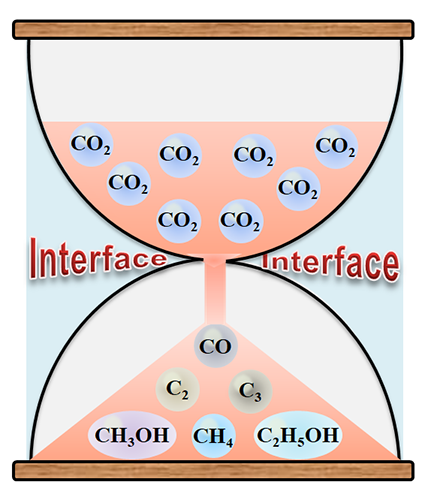
Cover Picture
Progress and
Understanding on Catalysts with Well-Defined Interface for Boosting CO2 Conversion
Binran Zhao, Yiyi Zhao, Peng Liu, Yulong Men, Xinyu Meng and Yunxiang Pan*
In the cover picture, we adapt
the ideal from "Journey to the West," one of Chinese four literary
classics. The ancient Chinese mythical character, Monkey King, holds a treasure
in his hand, which represents the catalysts with well-defined interface. CO2 is blown out from the mouth of Monkey King, then goes through the catalyst
interface, and finally is converted into high value-added chemicals like CH4,
CH3OH and CO. This well describes the focus of our paper titled “Progress
and Understanding on Catalysts with Well-defined Interface for Boosting CO2 Conversion”.
Submit a Manuscript
Progress and Understanding on Catalysts with Well-Defined Interface for Boosting CO2 Conversion
Binran Zhao, Yiyi Zhao, Peng Liu, Yulong Men, Xinyu Meng and Yunxiang Pan*
Chin. J. Struct. Chem. 2022, 41, 2204012-2204021 DOI: 10.14102/j.cnki.0254-5861.2022-0024
April 8, 2022
carbon dioxide, heterogeneous catalysis, interface effect, noble metal, transition metal, cold plasma
ABSTRACT
Catalytic
conversion of CO2 into valuable chemicals like CH3OH is
the most promising way to alleviate CO2 emission for solving the
serious climate change issue. Multi-component catalysts with well-defined
interface show outstanding performance in CO2 conversion due to the
synergistic effects and multifunctional properties caused by the well-defined
interface. A discharge technique, named as cold plasma, has been recognized as
an excellent strategy for tuning catalyst interface properties. The temperature
of cold plasma is lower than 200 ⁰C, and can be further lowered to room
temperature by simply changing the operation conditions of cold plasma. The
lower temperature of cold plasma can well maintain the catalyst structures,
especially the porous structures. When conducting cold plasma, in addition to
nontoxic working gases like Ar and air, no harmful substances are
used. Cold-plasma-prepared catalysts have unique interface properties, and
thereby exhibit superior performance in CO2 conversion over the
catalysts prepared by traditional methods. The present review summarizes the progress about the cold-plasma-prepared catalysts for CO2 conversion, discusses the origin for
the outstanding catalytic performance,
and proposes the challenges and
opportunities for further studies. This will stimulate more deep insights into the
cold-plasma-prepared catalysts with well-defined interface properties for achieving more efficient CO2 conversion.







